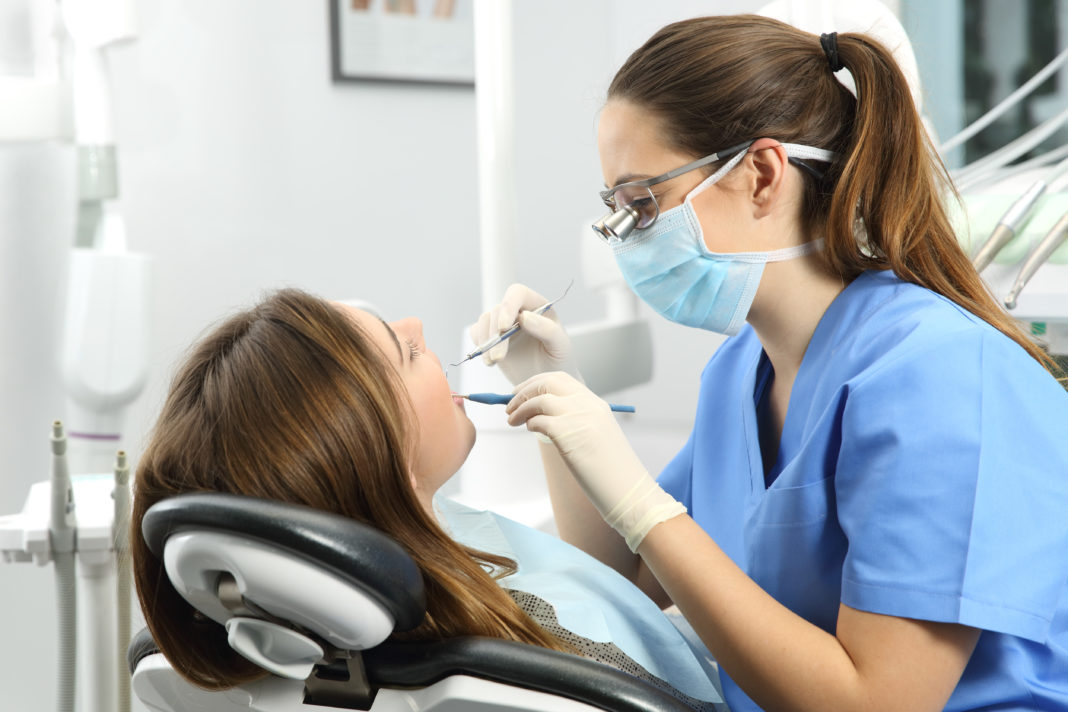According to a team led by the University of Buffalo (UB), the bacterium Veillonella parvula can engage in a one-sided relationship with pathogen Porphyromonas gingivalis, helping the germ multiply and cause gum disease.
The team’s study (“A cross-species interaction with a symbiotic commensal enables cell-density-dependent growth and in vivo virulence of an oral pathogen”), which appears in The ISME Journal, sought to understand how P. gingivalis colonizes the mouth. The pathogen is unable to produce its own growth molecules until it achieves a large population in the oral microbiome.
The answer: It borrows growth molecules from V. parvula, a common yet harmless bacteria in the mouth whose growth is not population dependent.
“Recent studies describe in detail the shifts in the composition of human-associated polymicrobial communities from health to disease. However, the specific processes that drive the colonization and overgrowth of pathogens within these communities remain incompletely understood,” the investigators wrote.
“We used in vitro culture systems and a disease-relevant mouse model to show that population size, which determines the availability of an endogenous diffusible small molecule, limits the growth, colonization, and in vivo virulence of the human oral pathogen Porphyromonas gingivalis. This bacterial pathogen overcomes the requirement for an endogenous cue by utilizing a cell-density dependent, growth-promoting, soluble molecule provided by the symbiotic early colonizer Veillonella parvula, but not produced by other commensals tested.
“Our work shows that exchange of cell-density-dependent diffusible cues between specific early and late colonizing species in a polymicrobial community drives microbial successions, pathogen colonization, and disease development, representing a target process for manipulation of the microbiome towards the healthy state.”
In a healthy mouth, P. gingivalis makes up a minuscule amount of the bacteria in the oral microbiome and cannot replicate. But if dental plaque is allowed to grow unchecked due to poor oral hygiene, V. parvula will multiply and eventually produce enough growth molecules to also spur the reproduction of P. gingivalis.
More than 47% of adults 30 and older have some form of periodontitis (also known as gum disease), according to the Centers for Disease Control and Prevention. Understanding the relationship between P. gingivalis and V. parvula will help researchers create targeted therapies for periodontitis, said Patricia Diaz, DDS, PhD, lead investigator on the study and professor of empire innovation at the UB School of Dental Medicine.
“Having worked with P. gingivalis for nearly two decades, we knew it needed a large population size to grow, but the specific processes that drive this phenomenon were not completely understood,” explained Diaz, who is also director of the UB Microbiome Center. “Successfully targeting the accessory pathogen V. parvula should prevent P. gingivalis from expanding within the oral microbial community to pathogenic levels.”
The study tested the effects of growth molecules exuded by microorganisms in the mouth on P. gingivalis, including molecules from five species of bacteria that are prevalent in gingivitis, a condition that precedes periodontitis.
Of the bacteria examined, only growth molecules secreted by V. parvula enabled the replication of P. gingivalis, regardless of the strain of either microbe. When V. parvula was removed from the microbiome, growth of P. gingivalis halted. However, the mere presence of any V. parvula was not enough to stimulate P. gingivalis, as the pathogen was only incited by a large population of V. parvula.
Data suggest that the relationship is one-directional as V. parvula received no obvious benefit from sharing its growth molecules, noted Diaz.
“P. gingivalis and V. parvula interact at many levels, but the beneficiary is P. gingivalis,” said Diaz, noting that V. parvula also produces heme, which is the preferred iron source for P. gingivalis.
“This relationship that allows growth of P. gingivalis was not only confirmed in a preclinical model of periodontitis, but also, in the presence of V. parvula, P. gingivalis could amplify periodontal bone loss, which is the hallmark of the disease,” added George Hajishengallis, DDS, PhD, co-investigator on the study and the Thomas W. Evans Centennial professor at the University of Pennsylvania School of Dental Medicine.
“It is not clear whether the growth-promoting cues produced by P. gingivalis and V. parvula are chemically identical,” said Diaz. “Far more work is needed to uncover the identity of these molecules.”



